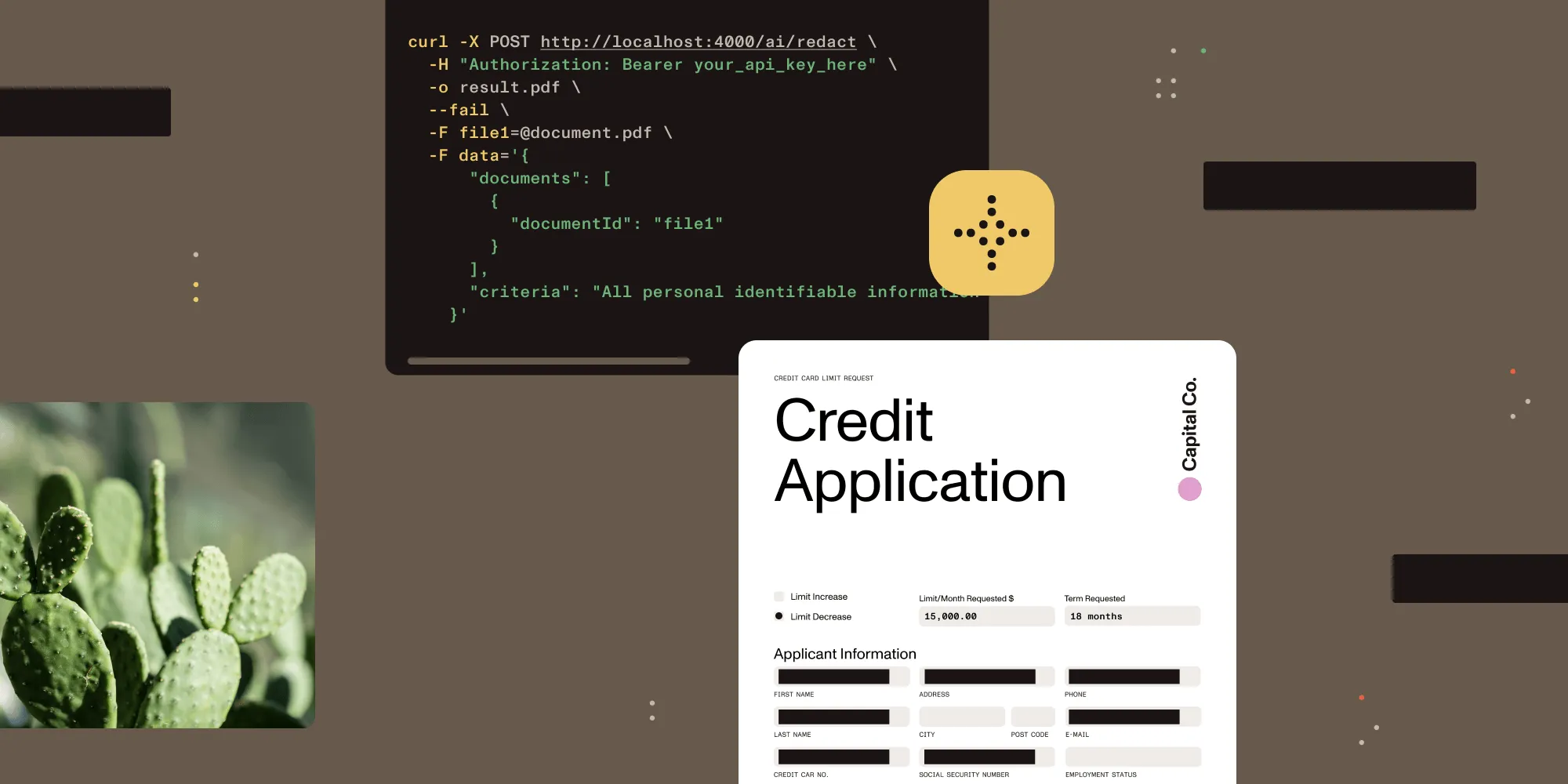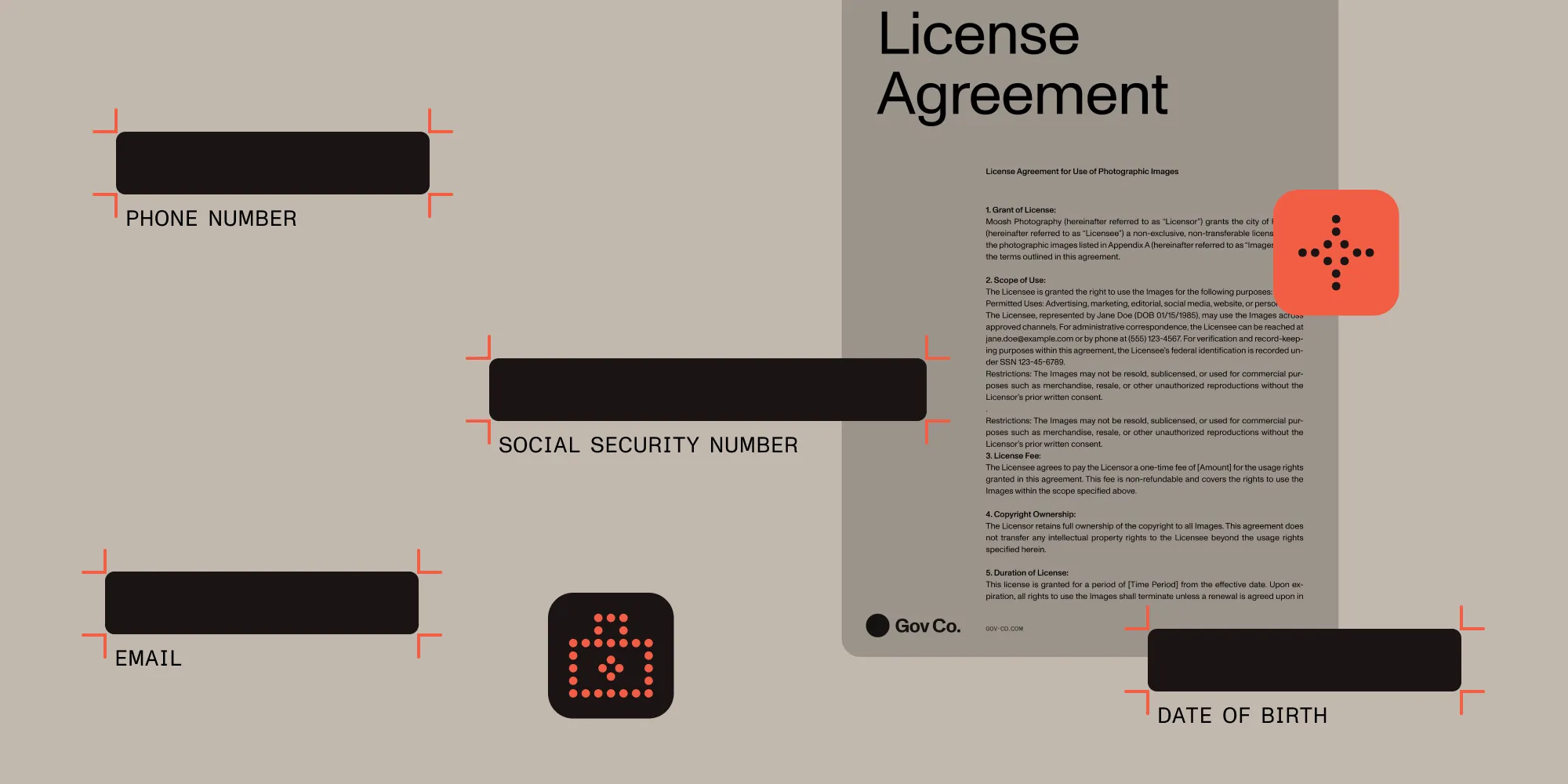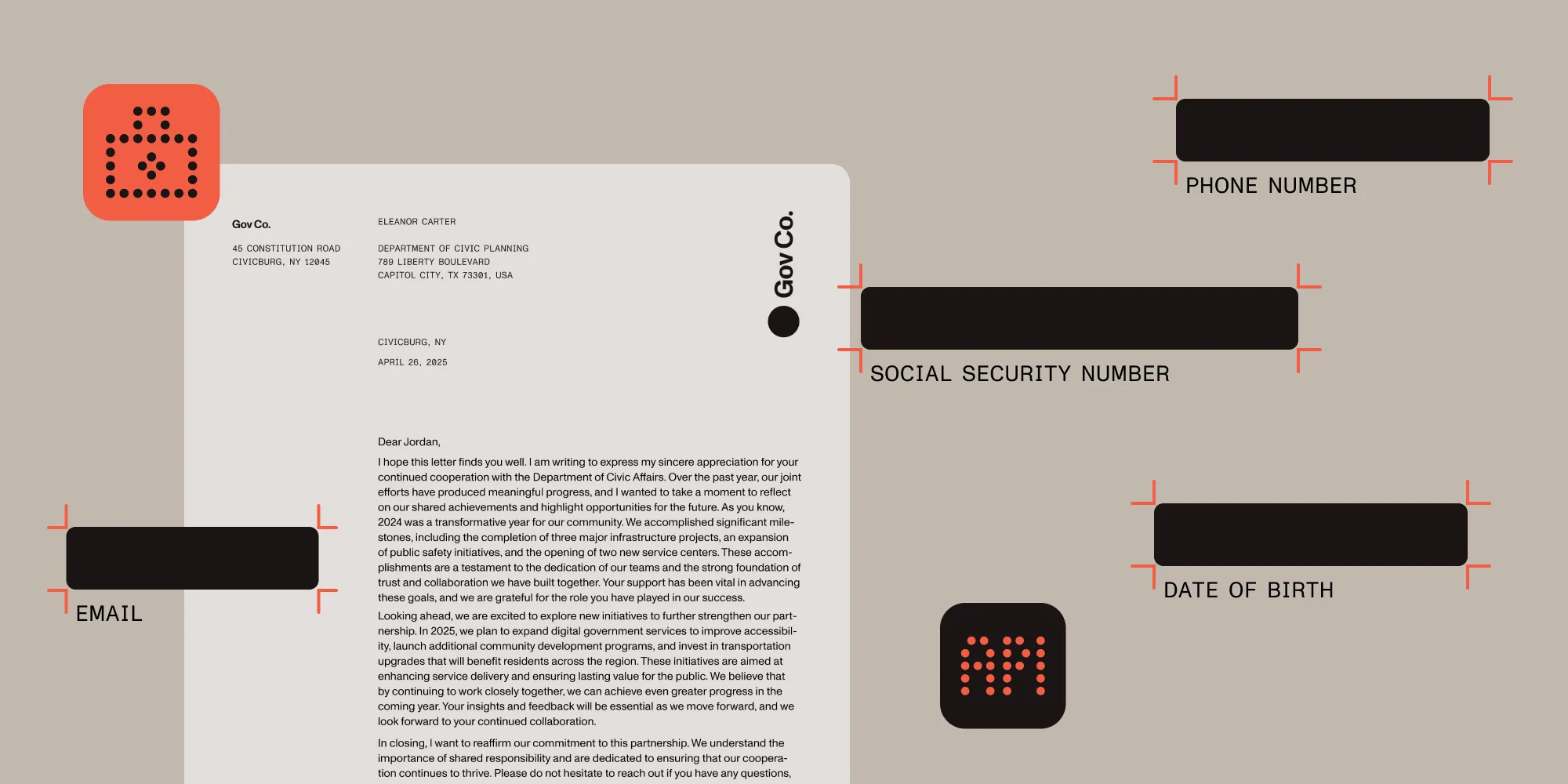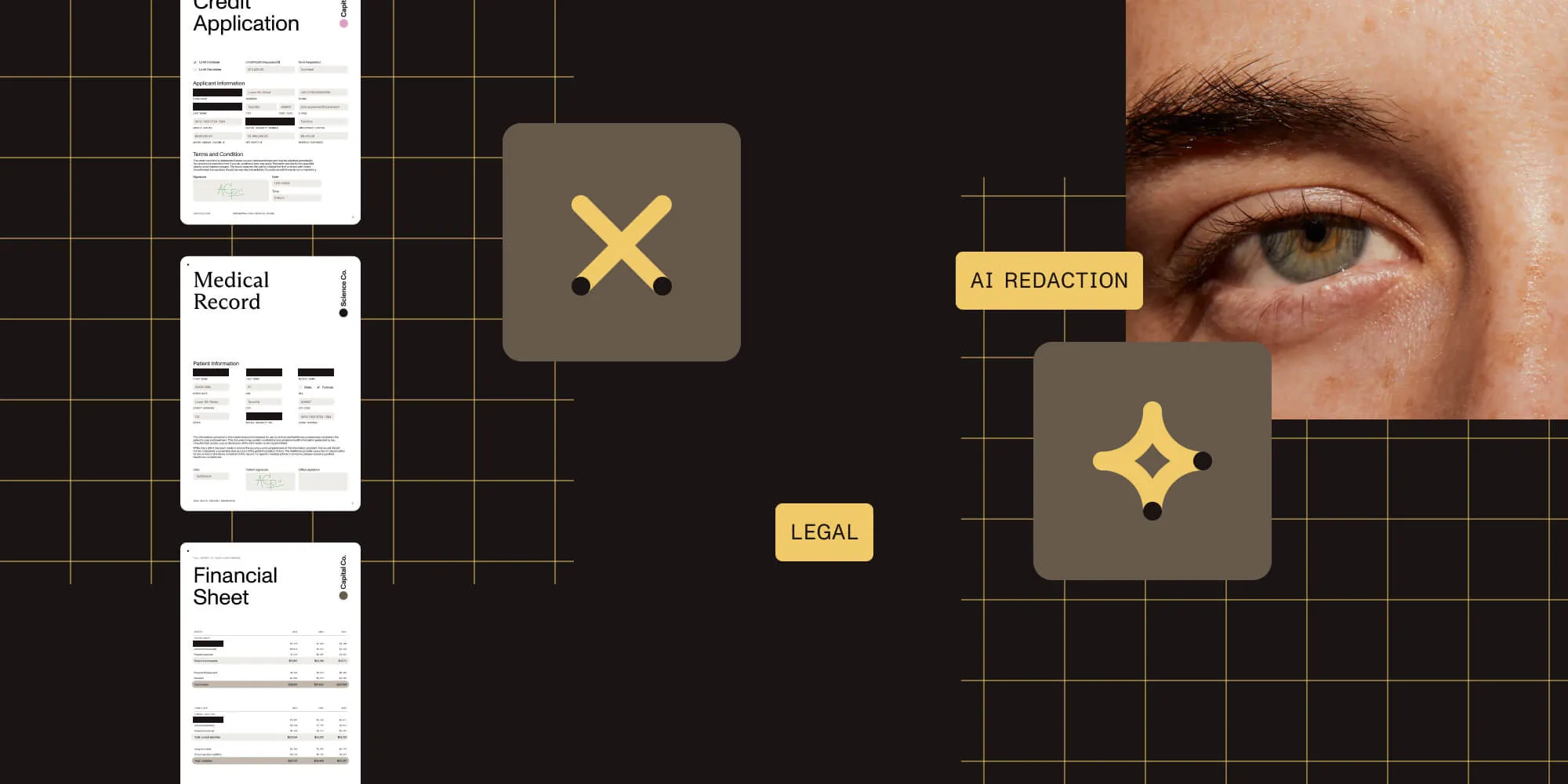From black boxes to smart blurs: AI redaction sets a new document security baseline in DWS Processor API
Table of contents

When the U.S. Transportation Security Administration accidentally posted its 93-page screening manual(opens in a new tab) online in 2009, officials thought the sensitive portions were safe behind thick black rectangles. However, curious readers simply copied and pasted the “redacted” text and exposed the entire playbook — a textbook example of how visual coverups can collapse in the digital world.
And it keeps happening. Wired recently cataloged(opens in a new tab) modern redaction failures where confidential court filings and corporate documents leaked because someone relied on a highlight tool or a brittle script.
Researchers at the University of Illinois tested 11 popular redaction utilities and broke two of them with a basic copy-paste attack(opens in a new tab) while developing a proof-of-concept called Edact-Ray, which guesses masked words from the spacing inside rectangles.
The financial downside is clear: IBM’s Cost of a Data Breach Report 2024(opens in a new tab) pegs the average incident at $4.88 million, the highest ever recorded. Organizations that automate security with AI save approximately $2.22 million compared with their manual peers. Meanwhile, GDPR regulators have issued hundreds of fines(opens in a new tab) that collectively exceed €4 billion, and enforcement is only accelerating.
Redaction is no longer a niche lawyer task; it’s a frontline control for anyone who ships PDFs to customers, partners, or auditors.
Why classic redaction breaks down
| Legacy method | How it works | Where it fails |
|---|---|---|
| Manual markup | Someone draws black shapes or sets text color to black. | Humans miss items; hidden layers remain searchable; unbearably slow for large batches. |
| Regex- or rule-based | A script removes strings that match patterns like \d{3}-\d{2}-\d{4}. | Misses context (e.g. phone vs. SSN); fragile with new formats; limited rule sets. |
| Raster and burn | Convert pages to images, paint pixels, reconstruct PDF. | Heavy DevOps; GPU bills; no granular accuracy metrics; quality loss on rebuild. |
All three approaches focus on appearance, not meaning. A black rectangle may hide glyphs on screen, but metadata (font positions, bookmarks, revision history) can still reveal the words underneath. Conversely, rule engines lock onto shapes of data (nine digits, four digits, etc.) and ignore semantics (for example, “May 5 2025” looks like an SSN in a naïve pattern).
AI redaction: Context beats patterns
Large language models (LLMs) flip the equation:
- Semantic understanding — The model sees a number next to “Routing No.” and flags banking data, even if the format is unusual.
- Multi-modal reach — Text and scanned images are all processed in one pass.
- Confidence scoring — Every prediction carries a probability so teams can stage borderline hits for review.
- Continuous learning — New entity types can be trained without rewriting brittle regex rules.
It’s faster and more accurate. What used to take 15 minutes to manually redact — like a 10-page contract — now takes less than 20 seconds.
Introducing AI Redaction for DWS Processor API
If you already use Nutrient DWS Processor API to render PDFs in the browser, you now have instant access to AI-powered redaction via a single endpoint: /ai/redact.
Under the hood, a headless AI assistant inside Nutrient’s multi-tenant cluster:
- Streams your PDF into memory.
- Calls your preferred LLM’s endpoints to understand the content.
- Returns a permanently redacted PDF — no DevOps, no GPU fleet, no extra authentication flow.
What engineers get out of the box
| Capability | Why it matters |
|---|---|
| Zero infrastructure | No servers, containers, or model updates to manage. |
| Usage-based cost | Only 0.05 credits × pages; redacting a 10-page contract costs approximately USD 0.05 on most plans. |
| Manual QA vs. automation | Use "state":"stage" for human-in-the-loop QA, or "apply" to burn boxes automatically. |
| Confidence filter | Tweak precision/recall with a single configuration parameter — no redeploys needed. |
Security and privacy — Full transparency
Recent internal discussions at Nutrient produced a clear data-flow policy:
- Upstream AI vendor — We handle the heavy lifting with large language models, turning pages into vectors and queries into smarter searches.
- No persistence — PDFs live only in RAM during processing and are destroyed immediately after the response.
- Minimal telemetry — We only store request stats (number of pages, latency, credit cost) — nothing the model saw.
- Policy in progress — A consolidated AI privacy policy covering Nutrient Copilot, DWS Processor, and future services will go public in Q2 2025.
Hands-on: Redact a PDF in five minutes
curl -X POST https://api.nutrient.io/ai/redact \ -H "Authorization: Bearer $NUTRIENT_KEY" \ -H "Content-Type: multipart/form-data" \ -F 'data={ "documents":[{"documentId":"file1"}], "criteria":"All personal identifiable information", "redaction_state":"apply" }' \ -F 'file1=@contract.pdf' \ -o result.pdfWhat happens?
- Upload —
file1is sent to DWS memory and not stored. - Process — The AI assistant detects personally identifiable information (PII) and instructs Document Engine to stage or apply redactions.
- Respond — You receive
result.pdf. - Verify — Open the file in DWS Viewer or any PDF viewer; text under the boxes is destroyed, and not just hidden.
Where customers are already winning
| Sector | Workflow | Result |
|---|---|---|
| FinTech | Strip account and routing numbers from statements | Reduced breach-insurance premium by 12 percent |
| Healthcare | Remove protected health information (PHI) before sharing with labs | HIPAA audits completed in half the usual time |
| Digital lending | Wipe SSNs from loan packages prior to eSigning | Slashed document preparation stage from 30 minutes to 3 minutes |
| Public records | Auto-redact addresses for FOIA releases | Avoided headline-grabbing data leak |
| Legal | Auto-remove privileged content before file handoff | Prevented costly sanctions and rework during discovery |
The bigger picture: Privacy as product value
Customers have options. They choose vendors who treat privacy as a first-class feature, not a checkbox. Permanent redaction helps close enterprise deals faster, builds trust with regulators, and reduces the cost of breach insurance.
With the cost of an average breach approaching five million dollars, the math is simple: Proactive AI redaction is cheaper than reactive damage control.
Questions? Feedback? Contact us for a demo and talk with our Solutions Engineers. Your users’ privacy — and your engineering team’s time and effort — will be better off for it.







